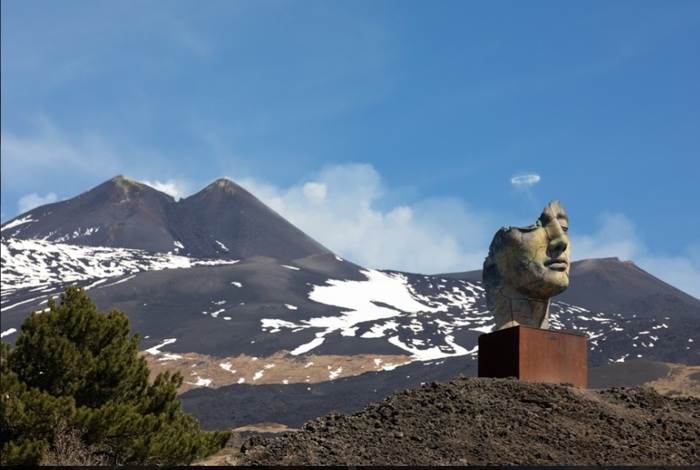From the air amaze the spirals formed in the middle of the desert of Peru by the "eyes of water", part of a pre-Columbian system of underground aqueducts that from the Andes continues to irrigate three valleys of the region of the famous geoglyphs of Nazca.
Built about 1,700 years ago near the city of Nazca, 450 km south of Lima, the aqueducts spread like branches forming a system of wells and canals made with stones and beams of huarango, a Peruvian coastal tree.
The work is a marvel of hydraulic engineering launched by settlers of the ancient Nazca culture and its preservation prompted the Peruvian authorities to propose it to UNESCO as a world heritage site.
It is a pre-Columbian system of underground aqueducts (AFP).
"We now know that they were built around 100 to 200 AD, in full development of Nazca society," says the director of the Nazca-Palpa Management Plan of the Ministry of Culture, Johny Isla.
This civilization developed on the southern coast of Peru and it is also attributed to the mysterious and famous Nazca lines, whose elaboration is later than the aqueducts.
"They are both contemporary and were made by the same society," says Isla.
The wells have a depth of up to 15 meters (AFP).
Of Nazca's 42 aqueducts, 29 still carry water from snow-capped mountains and rivers to farmland where potatoes, cotton, vegetables and fruit trees are planted.
The system carries about 18 to 20 liters of water per second and currently benefits about 900 families of small farmers in three Nazca valleys, mainly for their crops. They pay about 120 soles a year ($32) to a local entity.
"It helps us to irrigate all the agricultural fields," says farmer Nicolás Quispe, 39, who maintains his potato farm with water from the Ocongalla aqueduct.
The stones of the canals are pebbled and are placed in a way that filters the water (AFP).
"It's unique in all of South America," Isla says while touring the Cantalloc aqueduct, protected by the geoglyph of a feline that seems to monitor the course of groundwater from a neighboring hill.
The stones of the canals are pebbled and are placed in such a way that it filters the water in the wells, whose depth is up to 15 meters.
"Without this system, a civilization like the Nazca culture would not have been possible," said archaeologist Abdul Yalli after stressing that the rivers in the area are dry almost all year round.
A huge thousand-year-old public work
The wells are considered a great millenary public work.
"This is a work of art, architecture and engineering. These are stone channels that continue to work and that in order to build them obviously had to remove millions of tons of sand, make the channel and cover it again, "said the Spanish Jorge López-Doriga, director of Communication of the AJE Group, the Peruvian multinational that supports local authorities in the enhancement of this hydraulic work.
From the Andes it continues to irrigate the three valleys where the famous Nazca geoglyphs are located (AFP).
The Nazca aqueducts are on the indicative list of Unesco to be declared Cultural Heritage of Humanity after being inscribed in 2019.
The same civilization that built the aqueducts created the famous Nazca geoglyphs (AFP).
"There is no other place this type of aqueducts that are like spirals," said Ana María Cogorno, president of the María Riche International Association, which works to spread the value of the Nazca lines.
The Nazca Lines, a World Heritage Site since 1994, are according to UNESCO "the most outstanding group of geoglyphs in the world and are incomparable in extension, magnitude, quantity, size and diversity with any other similar work in the world".
It is a series of geometric figures and giant animals made in the middle of the desert that can only be appreciated from the sky, and their meaning is still an enigma: some researchers consider them an astronomical observatory and others a calendar.
AFP Agency.
See also
The date when the Earth will run out of oxygen is known
See also
A steward sweeps the networks for his way of giving instructions
See also
He had sex for 24 continuous hours and had to have his penis amputated
GML


/cloudfront-eu-central-1.images.arcpublishing.com/prisa/QX7L2WYUWRGS5DVYIB6AL73EIA.jpg)






